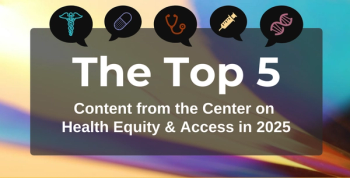
Health Data and Its Implications in Managing Chronic Disease
Advances in information technology is enabling peope to collect and store more health information than every before. How can we harness these valuable insights to help people with chronic disease live longer, healthier, happier lives?
With information technology (IT) advancing in leaps and bounds, it’s an exciting time in healthcare. Cutting-edge
The answer is
These technologies allow providers to better manage care for patients with serious medical conditions. Through data that’s collected, stored, analyzed, and presented in digital format, healthcare professionals can gain a more complete picture of a patient’s health status, make more accurate diagnoses, and reduce medical risk.
Here are just a few ways health data are and will continue to impact the way we diagnose, treat, and manage chronic conditions.
Chronic disease tracking and research
Some electronic health record (EHR) systems allow providers to create a patient database pertaining to some of the most common (and deadly) chronic diseases—including type 2 diabetes, asthma, high blood pressure, heart disease, and chronic obstructive pulmonary disease (COPD).
These
Improved patient monitoring and treatment
Wearable devices can remotely monitor, for example, a patient’s heart rate or blood glucose levels in real time. This information is sent electronically to a provider, who can review the data and respond appropriately.
Another example of wearable technology is the futuristic
More patient accountability
With health IT,
Enhanced coordination among providers
When various
According to Sam Hanna, Program Director for
“Informatics still has its challenges, because not everybody has fully bought in,” he said. “But we’re going to get there, and I think how we’re going to get there is by disruption. Whether it’s a new mobile device or a new wearable device, it’s just going to give us that ‘aha’ moment. This is the new frontier.”
Newsletter
Stay ahead of policy, cost, and value—subscribe to AJMC for expert insights at the intersection of clinical care and health economics.








































